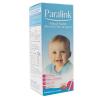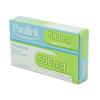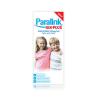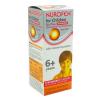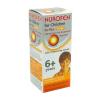Teething
The age at which the first tooth appears differs greatly from child to child.
When does the first tooth appear?
- The age at which the first tooth appears differs greatly from child to child.
- Very occasionally, perhaps 1 in 2000 to 3000 children are born with one or more teeth.
- These natal teeth are usually not the normal first teeth and appear where the first incisors will be. They only have small roots and if they are loose or causing problems with feeding they may need to be removed.
- Usually the first tooth – which tends to be in the middle of the lower jaw – appears at around six months of age. Other children may not develop any teeth until they are more than a year old.
- The complete set of 20 primary teeth (baby or milk teeth) is usually present by the age of two-and-a-half years.
- The first permanent (adult or second) teeth appear at around six years of age.
- These tend to be the incisors in the middle of the lower jaw and the first permanent molar teeth.
- The first permanent molars come up behind the primary teeth, they do not replace them.
Myths about teething
- Many things have been attributed to teething: rashes, fever, crying, bad temper, runny noses and extra dirty nappies, etc.
- None of this can be proven, particularly as so many other things that might influence behaviour are happening in the child's life at the same time.
- The important thing is not to use teething to explain away what might be the signs of illness.
What to do when your child is teething
Some teeth come through with no trouble at all. In other cases, the gum may be sore and red where the tooth is pushing its way out.
A child may dribble, gnaw and chew a lot or just be fretful, but it is difficult to tell if this is really due to teething.
- It can be helpful to give the child something hard to chew on.
- Teethers that can be cooled in the fridge can be particularly soothing.
- Teething gels containing local anaesthetics can provide some pain relief from sore gums.
- Sugar-free paracetamol, such as Calpol, may also be given. Be sure to follow the instructions according to the child's age.
Caring for your child's teeth
- As the first teeth start to come through they can be cleaned with special dental wipes.
- Start brushing as soon as possible after the teeth appear.
- Use a toothbrush with a small head and soft filaments.
- Brush thoroughly twice a day night and morning, with a fluoride toothpaste containing at least 1000 parts per million fluoride under age 3 and 1350 + parts per million fluoride over the age of 3 to help protect against decay (just before bed is important).
- You may wish to cradle your child and brush from behind as you would with your own teeth.
- Supervise your child brushing until they are able to do it well by themselves – usually around the age of seven.
- Encourage your child to spit after brushing; do not rinse afterwards as this reduces the benefits of the fluoride in the toothpaste.
- Use a tiny smear of toothpaste for babies and a pea-sized amount for children.
- Visit a dentist regularly to get your child used to the surgery.
- Reducing your child's sugar intake
As soon as you start your baby on solids, try to encourage a liking for savoury, rather than sweet tastes.
- Reduce the amount of sugary food or drinks you give your child and limit these to mealtimes. Try to feed no more than three meals and two snacks a day.
- Use stickers, comics, crayons, hair slides, etc, as treats instead of sweets or biscuits.
- Only give water or plain milk in a bottle. Juices should be diluted and given in a cup.
- Limit fizzy drinks and natural fruit juices as they contain sugar and are acidic. They cause decay and erosion that will, literally, dissolve the teeth.
- Do not put anything sweet on dummies/comforters.
- How often your child has sugar is more important than how much. If you give sweets as treats, ensure they are all eaten at the same time.
- Ask for sugar-free medicines.
- Read labels carefully. Sugar may be listed as glucose, sucrose, honey, dextrose, maltose, fructose, hydrolysed starch or syrup. Remember that maltodextrin, invert sugar, honey, raw sugar, cane sugar, muscavado and fruit juices all cause decay. Remember that some drinks labelled as being 'tooth – friendly' may still contain significant quantities of sugar harmful to teeth.
Other tips for healthy teeth
- Every time even small amounts of sugar are consumed, the acid level in the mouth increases to a level where it can cause dental decay for up to an hour.
- For this reason, it's not recommended to brush teeth immediately after something sweet or acidic since the enamel surface of the tooth is softened and brushing 'scours' the surface of the enamel, leading to erosion It's a better idea to wait an hour after eating before brushing.
- It is also useful to chew sugar-free chewing gum after eating as this encourages the flow of saliva, which naturally buffers the acids that cause dental decay.
- Alternatively, a small piece of cheese after eating will also help to neutralise the acid.
References:
http://www.netdoctor.co.uk/parenting/baby-and-toddler/a3077/childrens-teeth-and-teething/
https://en.wikipedia.org/wiki/Teething
http://www.parents.com/baby/health/baby-teeth/baby-teething-timeline/
https://www.todaysparent.com/baby/teething/teething-symptoms-and-solutions/







